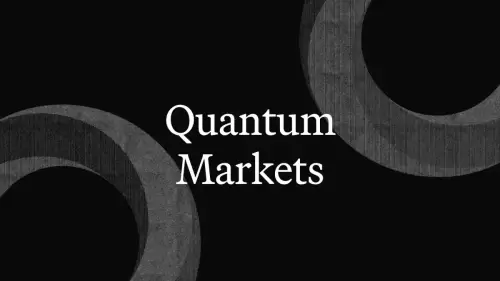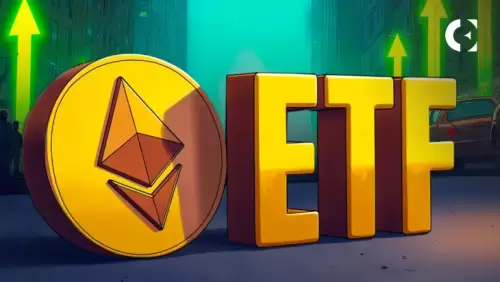 |
|
 |
|
 |
|
 |
|
 |
|
 |
|
 |
|
 |
|
 |
|
 |
|
 |
|
 |
|
 |
|
 |
|
 |
|
加密货币新闻
In a Dramatic Twist, Wall Street Has Defied Expectations, Clawing Its Way Back to Its Strongest Weekly Performance Since 2023
2025/05/02 01:11

Wall Street equities surprisingly rallied to their strongest weekly performance of 2023 despite a week marked by volatility, trade tension, and unsettling bond market behavior.
This rebound in equities stands in sharp contrast to the persistent instability across other key indicators, particularly in Treasuries and currency markets. Yet beneath the surface, uncertainty reigns, raising questions about how long this rally can truly last.
Lucas Morran, financial strategist at QuilCapital, examines how this fragile optimism may be masking deeper systemic strains and highlights what investors should prioritize as pressure mounts on policymakers and markets alike.
A Rally That Belies Deeper Market Turmoil
Friday’s stock market reversal caught many traders by surprise. The S&P 500 gained 1.2%, while the Nasdaq 100 advanced 1.3% and the Dow Jones climbed 1%, helping cement a potential end to a volatile week with the strongest equity rally since last year.
However, this recovery comes with caveats: investors are largely reacting to a pause in bond market chaos rather than any true easing of macroeconomic risks.
The 30-year Treasury yield, though slightly down by Friday, remains up by 45 basis points since the previous week, marking one of the most dramatic surges in borrowing costs since the pandemic. Meanwhile, the U.S. dollar hit a six-month low, signaling reduced investor confidence in the greenback’s safe-haven status.
Equity markets may be rising, but they’re moving in opposition to other asset classes—a divergence that hints at systemic stress rather than healthy optimism.
Image Credit: Canva
Trade Wars and Safe-Haven Doubts
Much of the market’s confusion stems from rapidly shifting U.S. trade policies. The latest round of tariffs—quickly imposed and then partially paused—has jolted global sentiment.
China responded by slapping increased tariffs on all U.S. imports, a move that could significantly impact bilateral trade flows and corporate revenues.
This response has had cascading effects. For instance, Tesla (TSLA) halted orders for its U.S.-manufactured Model S and Model X vehicles in China as the tariffs rendered them uncompetitive. Shares of U.S. chipmakers with domestic manufacturing also dived, underlining the tangible consequences of the escalating economic skirmish.
Even market veterans are drawing sobering comparisons. Some strategists warn that U.S. assets are behaving more like those from emerging markets than from a developed economy.
The erosion of the dollar’s strength, combined with the volatility in bond markets, has led some to question whether the U.S. can maintain its traditional role as the world’s financial anchor.
Sentiment Sours as Inflation Fears Rise
While markets wrestled with external pressures, internal data painted a bleak picture of consumer confidence. Surveys released on Friday revealed a sharp drop in consumer sentiment, fueled by a surge in long-term inflation expectations to multi-decade highs. Even before the policy shifts midweek, American households were already feeling the strain.
This erosion in confidence suggests that consumers are increasingly anxious about the future—not just because of headlines, but due to real economic pressures that affect spending, saving, and investing behaviors. For a consumption-driven economy like the U.S., this represents a major risk to continued growth.
Bond Market Panic and China’s Role
The bond market has been ground zero for this week’s financial turbulence. Rising yields on longer-dated Treasuries have unnerved analysts and investors alike. Theories are now circulating about China possibly selling U.S. debt, though evidence remains circumstantial. Still, the prospect of such action has rekindled old fears about geopolitical tensions translating into financial weaponry.
Adding to concerns, analysts are worried about a potential “kerfuffle” in the Treasury market—an unusual term used by a top bank executive to describe what might be a liquidity crunch or regulatory dislocation. Many now believe the Federal Reserve will be forced to intervene, but likely only after signs of more systemic stress emerge.
Barclays analysts echoed these concerns, noting that until Treasuries return to normal behavior, other risk assets such as equities are likely to remain fragile and prone to sharp swings.
A World Watching U.S. Policy Shifts Closely
The global ripple effects are already being felt. As the MSCI World Index rose 0.9%, international investors found themselves trying to navigate an increasingly chaotic landscape. While some saw opportunities in undervalued assets, many are adopting a defensive stance, moving capital into short-duration bonds or away from the U.S. altogether.
Two-year Treasuries are now being viewed as safer bets amid the uncertainty.
Strategists have recommended short positions on equities until the S&P 500 hits 4,800 points while advocating for long bets on shorter-dated debt instruments that carry less risk in turbulent environments.
Conclusion: Resilience or Reversal Ahead?
The sharp rebound in equities may offer a brief moment of relief, but it does little
免责声明:info@kdj.com
所提供的信息并非交易建议。根据本文提供的信息进行的任何投资,kdj.com不承担任何责任。加密货币具有高波动性,强烈建议您深入研究后,谨慎投资!
如您认为本网站上使用的内容侵犯了您的版权,请立即联系我们(info@kdj.com),我们将及时删除。
-

-

- 一种新的用于水电池的干燥电极可提供阴极的碘和锂离子电池的两倍以上
- 2025-06-13 12:25:12
- 阿德莱德大学的研究人员开发了一种针对锌 - 碘电池的新干电技术,避免了传统的碘混合碘。
-

- 量子市场找到最佳的EIP来提高ETH的价格
- 2025-06-13 12:20:11
- 这个量子市场的目标是找到最佳的EIP来实施以提高ETH的价格。由爱丽丝。
-

- 码头($ TICS):最终的预售阶段和真正的实用程序
- 2025-06-13 12:20:11
- 2025年6月,只有少数项目提供真正的实用程序和长期愿景。 Qubetics迅速成为购买的顶级加密宝石之一
-

-

- 伊朗攻击可能会使美国通货膨胀率提高到5%
- 2025-06-13 12:15:12
- 如今,Beincrypto深入了解地缘政治紧张对比特币(BTC)的影响,因为以色列和中东之间的伊朗之间的紧张局势越来越大。
-

-

-





























































